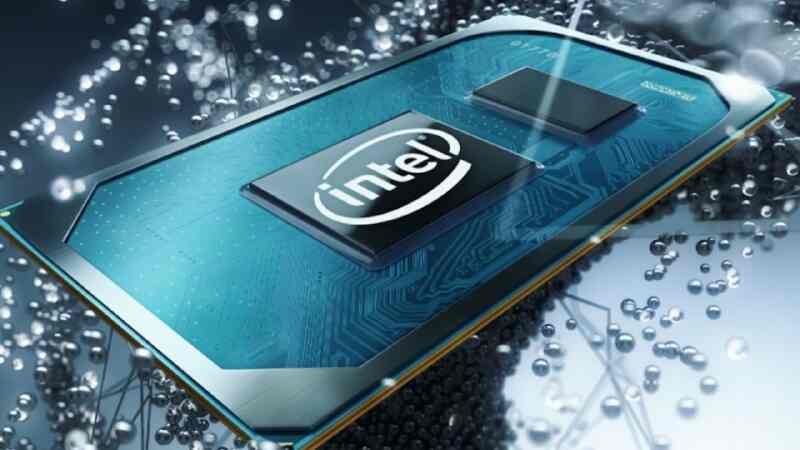Understanding the concept of Intel Bottleneck Calculator. When it comes to maximizing your PC’s performance, understanding the concept of bottlenecking is crucial. A bottleneck occurs when one component of your system is significantly slower or less powerful than the others, causing it to limit the overall performance of your PC. This can lead to frustratingly slow load times, laggy gameplay, and overall sluggishness.
Identifying and addressing bottlenecks is essential if you want to unlock the full potential of your system. By pinpointing the weak links in your PC’s hardware, you can make informed decisions on upgrades or optimizations to improve its performance.
The importance of identifying and addressing bottlenecks
Identifying bottlenecks is crucial for several reasons. First, it allows you to make the most cost-effective upgrades to your system. Instead of wasting money on upgrades that won’t significantly improve performance, you can focus on the components that are truly holding your system back.
Secondly, addressing bottlenecks can lead to a smoother and more enjoyable user experience. Whether you’re a gamer, a content creator, or simply someone who wants their PC to run smoothly, eliminating bottlenecks will ensure that your system is performing at its best.
Introduction to the Intel Bottleneck Calculator
The Intel Bottleneck Calculator is a powerful tool designed to help you identify and address bottlenecks in your PC’s performance. Developed by Intel, one of the leading manufacturers of computer hardware, this tool takes into account various factors such as CPU, GPU, RAM, and storage to determine if any components are limiting your system’s performance.
How the Intel Bottleneck Calculator works

The Intel Bottleneck Calculator works by analyzing the specifications of your PC’s components and comparing their performance capabilities. It takes into account factors such as clock speed, core count, memory bandwidth, and storage speed to determine if any component is a bottleneck.
To use the Intel Bottleneck Calculator, simply visit the Intel website and input the specifications of your CPU, GPU, RAM, and storage. The calculator will then analyze the data and provide you with an overview of your system’s performance, highlighting any bottlenecks that may be present.
Step-by-step guide on using the Intel Bottleneck Calculator
Using the Intel Bottleneck Calculator is straightforward and user-friendly. Here’s a step-by-step guide to help you get started:
- Visit the Intel website and navigate to the Bottleneck Calculator page.
- Input the specifications of your CPU, GPU, RAM, and storage by selecting the appropriate options from the dropdown menus.
- Once you’ve entered all the necessary information, click on the “Calculate Bottleneck” button.
- The Intel Bottleneck Calculator will analyze your system’s specifications and provide you with an overview of any bottlenecks that may be present.
- Take note of the bottleneck recommendations provided by the calculator. These recommendations will help you understand which components are limiting your system’s performance.
Interpreting the results and understanding the recommendations
After using the Intel Bottleneck Calculator, you will be presented with an overview of your system’s performance and any bottlenecks that may be present. It’s essential to understand the recommendations provided to make informed decisions on how to address these bottlenecks.
The calculator will typically categorize the bottlenecks as either CPU, GPU, RAM, or storage. Each category will have a rating indicating the severity of the bottleneck. For example, a CPU bottleneck rating of 90% means that your CPU is limiting your system’s performance by 90%.
Based on these recommendations, you can prioritize upgrades or optimizations to address the most significant bottlenecks first. For example, if the calculator indicates a severe GPU bottleneck, upgrading your graphics card would be a wise investment.
Addressing bottlenecks and optimizing your PC’s performance
Once you’ve identified the bottlenecks in your PC’s performance, it’s time to address them and optimize your system for peak performance. Here are a few strategies you can employ:
- Upgrade your hardware: If the Intel Bottleneck Calculator suggests that a specific component is severely limiting your system’s performance, consider upgrading to a more powerful option. This could involve upgrading your CPU, GPU, or adding more RAM.
- Optimize software settings: Sometimes, bottlenecks can be alleviated by optimizing software settings. For example, adjusting graphics settings in games or optimizing your operating system can help improve performance without the need for a hardware upgrade.
- Consider overclocking: Overclocking is the process of running your hardware at higher speeds than the manufacturer’s specifications. This can help squeeze out some extra performance from your components, but it should be done with caution and proper cooling.
Real-world examples of how the Intel Bottleneck Calculator improved gaming performance
To illustrate the effectiveness of the Intel Bottleneck Calculator, let’s look at a few real-world examples of how it has improved gaming performance for PC enthusiasts.
Example 1: John, an avid gamer, was experiencing frequent FPS drops and stuttering in his favorite games. After using the Intel Bottleneck Calculator, he discovered that his CPU was severely bottlenecking his system. Following the calculator’s recommendations, John upgraded his CPU to a more powerful model. The result? Smooth gameplay and a significant improvement in overall performance.

Example 2: Sarah, a content creator, found that her video rendering times were unacceptably long. Using the Intel Bottleneck Calculator, she identified a bottleneck in her RAM. Sarah decided to upgrade her RAM to a higher capacity and faster speed. As a result, her video rendering times decreased significantly, allowing her to be more productive.
Other tools and methods for optimizing PC performance

While the Intel Bottleneck Calculator is an excellent tool for identifying and addressing bottlenecks, there are other tools and methods you can use to optimize your PC’s performance. Here are a few worth considering:
- Benchmarking software: Benchmarking software allows you to test the performance of your PC and compare it to other systems. This can help identify bottlenecks and track performance improvements over time.
- Cleaning and maintenance: Regularly cleaning your PC’s hardware and optimizing your operating system can help improve performance. This includes tasks such as removing dust from fans and heatsinks, updating drivers, and running disk cleanup utilities.
- Monitoring software: Monitoring software allows you to keep an eye on your PC’s hardware performance in real-time. This can help you identify bottlenecks and troubleshoot any issues that may arise.
7 FAQs
Is the Intel Bottleneck Calculator free to use?
Yes, the Intel Bottleneck Calculator is free to use and can be accessed on the Intel website.
Can the Intel Bottleneck Calculator be used with non-Intel components?
Yes, the Intel Bottleneck Calculator can be used with both Intel and non-Intel components. It takes into account the specifications of all components to determine bottlenecks.
How accurate is the Intel Bottleneck Calculator?
The Intel Bottleneck Calculator is highly accurate and takes into account various performance factors to determine bottlenecks. However, it’s always a good idea to cross-reference its recommendations with other sources.
Can the Intel Bottleneck Calculator be used for laptops?
Yes, the Intel Bottleneck Calculator can be used for both desktops and laptops. It analyzes the specifications of the components and provides recommendations accordingly.
Can the Intel Bottleneck Calculator be used for gaming consoles?
No, the Intel Bottleneck Calculator is designed specifically for PC systems and cannot be used for gaming consoles.
How frequently should I use the Intel Bottleneck Calculator?
It’s a good idea to use the Intel Bottleneck Calculator whenever you’re considering upgrades or optimizations to your PC. This will ensure that you’re making informed decisions based on the latest performance data.
What if I don’t have the specifications of my components?
If you’re unsure about the specifications of your PC’s components, you can use various software tools to gather this information. CPU-Z and GPU-Z are popular options for obtaining detailed hardware information.
Conclusion: Unleashing the full potential of your system with the Intel Bottleneck Calculator
In conclusion, the Intel Bottleneck Calculator is an invaluable tool for PC enthusiasts looking to maximize their system’s performance. By identifying bottlenecks and providing recommendations, this calculator allows you to make informed decisions on upgrades and optimizations.
Remember, addressing bottlenecks is crucial for unlocking the true potential of your system. Whether you’re a gamer, a content creator, or simply someone who wants their PC to run smoothly, the Intel Bottleneck Calculator can help you achieve peak performance.
So, don’t let your PC’s performance be limited by bottlenecks. Unlock its true potential with the Intel Bottleneck Calculator today!
